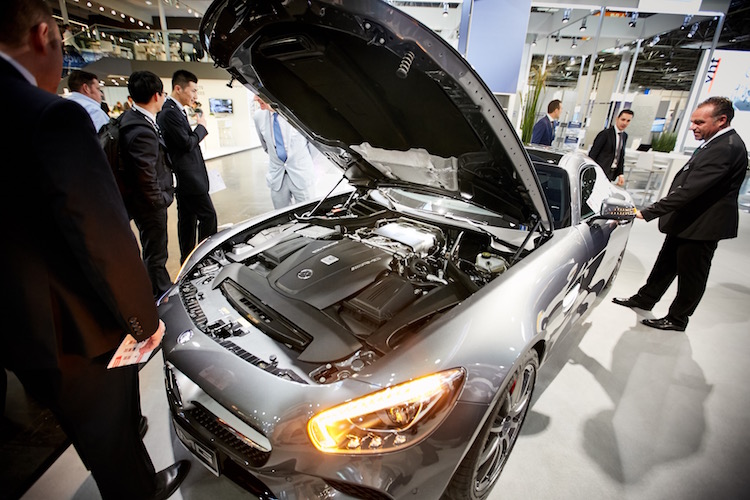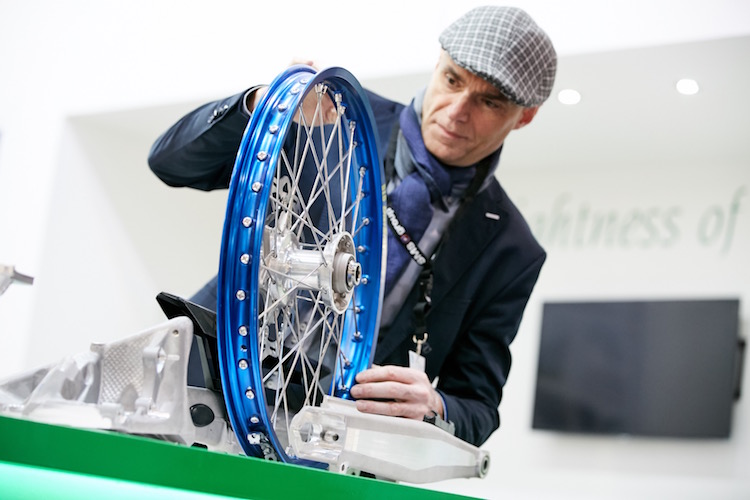+39 029363537

Larger, more international, more professionally accomplished: ALUMINIUM broke records again across disciplines. Six per cent more exhibitors, two percent more visitors and a 65 per cent increase in internationality make it abundantly clear that the potential of and outlook for lightweight solutions is still growing immensely. A total of 992 exhibitors from 58 nations and 24,748 trade visitors came to the world’s largest industry trade fair in Düsseldorf. “With that, ALUMINIUM is among a select group of industry shows that grow from event to event”, says Hans-Joachim Erbel, CEO Reed Exhibitions Deutschland, the organiser of ALUMINIUM. Since the debut event in 1997, the number of exhibiting companies has jumped nearly fivefold; the number of visitors quadrupled.

Light but also hard, corrosion-resistant and easy to recycle. Those are the four properties that promise such a bright future for “white gold”. Whether it’s in the automotive industry, aeronautics or construction, “Mobility, lightweight construction and resource efficiency – global megatrends are the forces that drive expanding demand for aluminium”, says Christian Wellner, managing member of the executive committee of GDA, the German Confederation of the Aluminium Industry.
Experts forecast worldwide demand to increase from just under 60 to 70 million tonnes by 2020. “This demand occurs mostly in the transport sector, where demand for aluminium will go up by six per cent in 2016. Low-CO2 mobility is an important component of Europe’s strategy for a sustainable economy – and aluminium is part of the solution”, says Gerd Götz, the director general of the European industry association EA. At 140 kg, the average amount of aluminium that goes into each car built in Europe has tripled since just 20 years ago. At 160 kg, that share is even higher in the US.
“Lightweight construction is a key technology of the future that’s making a critical contribution to the modernisation of industry. Electro-mobility, for example, is inconceivable without lightweight engineering”, says Iris Gleicke, Parliamentary State Secretary at the German Federal Ministry for Economic Affairs and Energy.
This boost in demand was noticeable at ALUMINIUM, impacting both the overall mood and the deal-making. A representative survey on the economy conducted for the trade fair confirmed this point. More than 60 per cent of the over 500 responding companies expect demand to increase further; 27 per cent expect sales to remain flat; only 6 per cent fear a slightly weakening performance in the medium term.

Many companies list high trade barriers and access to markets and raw materials as the biggest challenges. The globalisation of markets has reached the aluminium industry, bringing new structures and a global division of labour into the international value chain – a development that was clearly reflected at ALUMINIUM.
Two thirds of exhibitors – 649 altogether – travelled to ALUMINIUM in Düsseldorf from outside Germany. Germany (354) tops the list of 58 represented nations, followed by the second-strongest exhibitor nation Italy (116), China (90), Turkey (67) and Spain (29); the Netherlands and the UK tied for 6th (28 each). Strong contingents also hailed from the US (23) and Canada (22), which edged out France, Austria and Switzerland (all with 21 companies).
“ALUMINIUM underscored its role as a global marketplace and recorded gains, especially from abroad”, said Olaf Freier, the event director of ALUMINIUM, at the end of the three-day event. The same is true for visitors, where ALUMINIUM achieved a top internationality score of 54 per cent. At 20 per cent, the share of foreign visitors from overseas was remarkably high. “A benchmark for the worldwide relevance of ALUMINIUM”, says Olaf Freier.
The next ALUMINIUM, 12th World Trade Fair and Congress, will take place in Düsseldorf from 9 to 11 October 2018.